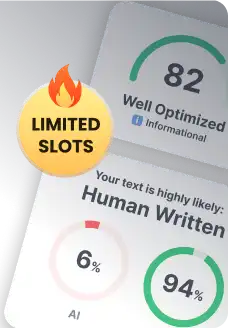Ever wonder how some websites consistently draw in a crowd, offering valuable insights and sparking conversations? The secret often lies in strategically crafted blog posts.
Blog posts are written articles on a blog that focus on a specific topic to share information, ideas, or experiences with a target audience, and they can vary in length and complexity, often using images, videos, and other media to increase engagement. Businesses frequently use blog posts as a key part of their content marketing strategy to attract potential customers and establish authority in their industry. Individuals also use them to share their passions or expertise with a wider online community. The conversational and often personal tone helps to build a connection with readers.
Keen to discover the practical steps involved in crafting blog posts that truly capture attention and deliver value? Read on.
Why Blog Posts Still Matter in 2025
Blog posts aren’t going anywhere—and if anything, they’re more essential than ever.
They Drive Organic Discovery (Still!)
Despite a changing digital landscape dominated by short-form video and AI-generated answers, blog posts remain the backbone of organic search. Search engines still rely on rich, structured content to determine topical authority and user relevance. Blog posts provide that structure in spades.
In fact, when people wonder do blog posts help SEO, they’re really asking: can long-form content still rank in an AI-first search world? The answer is a resounding yes—but only when those posts are well-written, updated, and deliver actual information gain. Google’s systems, including BERT and MUM, now prioritize deep, contextual answers to user queries, not just keyword-stuffed text.
They’re Prime Real Estate for Earning Trust
Here’s something often missed about blog content: it’s not just for traffic, it’s for trust. In 2025, readers want to feel seen, understood, and educated. Blog posts let you teach, not just tell. Unlike fleeting social posts or product pages, blogs let you dive deeper, sharing behind-the-scenes stories, expert insights, or lessons learned.
This depth and perspective are also what distinguish blog posts from other formats like online news stories. If you’re wondering how blog posts differ from online news stories, it comes down to purpose, tone, and longevity—blogs prioritize evergreen insights and personal voice, while news focuses on timeliness and objectivity.
This matters especially for service-based businesses and thought leaders because long-form content builds credibility. Readers don’t just skim; they scroll, save, and share.
They Feed the Content Ecosystem
Most people say content strategy starts with social media, but seasoned marketers know blog posts fuel everything else. One solid blog post can be repurposed into:
- Social captions
- Newsletter content
- YouTube scripts
- Webinar talking points
It’s the ultimate content hub. Blog posts create a searchable knowledge base that keeps paying off in clicks, backlinks, and brand equity.
How to Structure a Blog Post That Engages and Ranks
A great blog post doesn’t just happen—it’s built intentionally, like a well-designed home that’s both beautiful and easy to live in.
Start With a Clear, Compelling Structure
Most people say, “Just start writing!” but in our experience, the best blog posts follow a proven blog post format that balances creativity with clear organization.
Here’s a simple framework that consistently works:
- Headline that hooks: Make it promise a clear benefit or outcome.
- Strong introduction: Set up the problem and hint at the solution.
- Scannable body: Break your content into sections with H2s and H3s, making it easy for readers (and search engines) to digest.
- Helpful visuals: Add images, charts, or infographics to enhance understanding.
- Clear conclusion: Summarize key takeaways and offer a call to action.
- “How-to” tutorial: If your post is instructional, here’s a guide on how to write a how-to blog post that keeps readers engaged while clearly walking them through each step.
For a deeper walkthrough on blog layouts that perform, including real-world examples, check out these sample blog posts.
If you want a deeper walkthrough on blog layouts that perform, check out our guide on blog post format and tips on how to format a blog post.
Post It Where It Matters Most
Once your post is ready, you might wonder: Where should it live? Should you publish it on LinkedIn? Medium? A third-party blog?
While those platforms can be useful for distribution, your own website should be your primary publishing hub. Owning the experience—and the SEO benefits—matters.
We break this down fully into where to post a blog, but the short version is to publish first on your owned site, then amplify elsewhere strategically.
Cite Sources the Smart (and Ethical) Way
Here’s something surprisingly overlooked in blogging: Citing sources isn’t just about being polite—it’s about building credibility.
When you back up your claims with reputable sources, you:
- Build trust with skeptical readers
- Boost your blog’s authority (which Google notices)
- Protect your brand from accusations of misinformation
The best practice? Link directly to the original source, not a secondhand reference. And when you quote someone, attribute it clearly. If you need a cheat sheet on doing it right, check out how to cite sources in a blog post.
The Anatomy of a High-Performing Blog Post
Want to try SurgeGraph for free?

Generate 20 documents

SEO tools (Auto Optimizer, Internal Linking, and more)

No credit card required
A high-performing blog post isn’t just good writing, it’s good design for the mind. Every piece plays a role in pulling readers in, keeping them hooked, and leaving them satisfied (and ready for more).
Headline: Optimize for Curiosity + Keywords
The headline is your blog post’s first—and sometimes only—chance to grab attention. Most people say, “Just be descriptive,” but here’s the truth: descriptive alone doesn’t cut it anymore.
In our experience, the best headlines balance two critical forces:
- Curiosity: They spark just enough intrigue to make someone click.
- Keywords: They naturally include terms readers are already searching for.
You won’t find this in most beginner guides, but think of your headline as a micro-promise: it hints at a reward readers can’t resist and signals to search engines what the page is about.
Example: Instead of “Healthy Dinner Recipes,” try “15-Minute Healthy Dinner Recipes Even the Pickiest Eaters Will Love.”
Introduction: Tie It to a Clear Reader Problem
Here’s something often missed about blog intros: they’re not about you—they’re about the reader.
A strong introduction:
- Names the reader’s problem or question quickly
- Builds tension by showing what’s at stake
- Hints at the solution your post will deliver
Think of it like this: The intro invites readers into a story they already care about. It’s not about dazzling with cleverness—it’s about making readers feel seen and understood.
Body: Organize for Clarity and Flow
The body of your post is where you deliver the goods. But without thoughtful organization, even the best ideas can feel chaotic.
To create a smooth, satisfying reading experience:
- Use clear H2 and H3 headings to guide readers.
- Break up text with bullet points, numbered lists, and visuals.
- Keep paragraphs short—2–4 sentences max.
If you want a full roadmap to structuring the body like a pro, check out how to organize a blog post.
Ending Strong: Leave Readers with Impact
Too many blog posts just… fizzle out. A high-performing post, though, ends with purpose.
A strong ending should:
- Summarize key insights (without rehashing everything)
- Reinforce the value the reader gained
- Offer a next step (even if it’s just reflecting or sharing)
Want tactical ideas for creating endings that linger in readers’ minds? See our full guide on how to end a blog post.
Find Your Ideal Blog Publishing Rhythm
Determining how often to publish is one of the first steps in building a successful blog. The answer hinges on your goals, resources, and audience, despite the flood of online advice.
Thinking about posting every day? Before you dive in, it’s important to know how many blog posts per day are realistic. For most brands and solo creators, two to four posts a week hit the sweet spot, so it’s worth figuring out how many blog posts per week will keep you consistent without burning out.
Getting ready to launch your website? Don’t go live with just one post. Set yourself up for success by determining how many blog posts to publish before launch. After launch, stay on track by setting goals based on how many blog posts it takes to start getting traffic.
Optimize for Keywords, Not Just Clicks
Keyword strategy is often misunderstood. It’s not about stuffing the same phrase into every paragraph—it’s about depth, context, and usefulness.
As you develop posts, think carefully about the variety of phrases readers might use. Knowing how many keywords per blog post to target naturally, without overwhelming your writing, makes the difference between content that feels helpful versus robotic.
The best-performing posts feel organic because they are organic: naturally covering the full landscape of a topic without chasing keyword quotas.
Know Your Value (and Charge for It)
If you’re writing blog posts for clients, knowing your worth is non-negotiable. Pricing content work is tricky because it’s not just about word count—it’s about expertise, research, and results.
Whether you’re freelancing, agency building, or just pricing your first projects, understanding how much to charge for a blog post ensures you’re valuing your work properly and building a career, not just picking up gigs.
Want to try SurgeGraph for free?

Generate 20 documents

SEO tools (Auto Optimizer, Internal Linking, and more)

No credit card required
Writing Great Posts Isn’t Optional Anymore
In a sea of “meh” content, average posts don’t stand a chance. The winners—the posts that rank, resonate, and drive real action—are the ones crafted with care.
Learning how to write better blog posts isn’t just for beginners. It’s an ongoing skill for anyone serious about content marketing. Even small improvements—tighter headlines, clearer structure, stronger transitions—compound over time to set your blog apart.
First-Time Blogger? Here’s Your Best Move
Starting your blog can feel overwhelming—where do you even begin?
The best answer: start small, start real. Your first post doesn’t have to change the world. It just has to speak to one person, about one real problem, in one clear way. If you’re unsure how to pull that off, our first blog post guide walks you through exactly how to turn those first words into momentum.
When to Post Blog Content for Best Results
You can write the perfect blog post—helpful, polished, SEO-friendly—but if you publish it at the wrong time or without a plan, it’s like shouting into an empty room.
Timing and consistency don’t just influence how many people see your content—they shape how your audience learns to trust you.
Timing: It’s About Habits, Not Just Hours
Most advice around blog timing focuses on the clock: “Post at 9 AM on Tuesdays.” And sure, there’s data behind that—but here’s what really matters: your audience’s rhythm.
If your readers are professionals who check blogs during their morning commute, early weekday mornings might be gold. But if your niche leans toward creative freelancers, evenings or Sundays might outperform. The key is to match when you post with when they’re most likely to care.
To dig deeper into timing benchmarks, refer to our breakdown of the best times to post a blog, based on actual audience data, not guesswork.
Consistency Builds More Than Traffic
Here’s something often missed about posting schedules: consistency doesn’t just help with SEO—it helps build anticipation.
When you publish regularly—whether that’s once a week or twice a month—you’re making a silent promise to your readers: I’m here, and I’m showing up for you.
That’s how casual readers become subscribers. And it’s how blogs become brands.
Frequently Asked Questions
What exactly is a blog post, and how is it different from other types of online content?
A blog post is an article or entry published on a blog that typically focuses on a single topic, idea, or narrative. Unlike static web pages or sales copy, blog posts are conversational, timely, and often written in the author’s voice to inform, entertain, or educate readers. They may include personal insights, data-backed analysis, or storytelling, depending on the goal. What sets blog posts apart is their flexibility in format and tone—they can be casual or professional, short or in-depth, and frequently updated or published in series. This makes them a powerful medium for building relationships with an audience over time.
How long should a blog post be to perform well in search engines?
While there’s no one-size-fits-all answer, high-performing blog posts typically range from 1,000 to 2,500 words. That range allows enough depth to cover a topic thoroughly while providing sufficient keyword context for SEO. However, length alone doesn’t guarantee success. Posts must also be well-structured, include relevant headers and subtopics, and answer user intent clearly. In our experience testing tools like Surfer SEO and Clearscope, the best results came from content that balanced depth with readability, regardless of exact word count.
What are the key elements that make a blog post truly “incredible”?
An incredible blog post blends clarity, purpose, and value. At a minimum, it should include a compelling headline, a strong introduction, useful body content, visual enhancements (like images or graphs), and a clear conclusion or call to action. But here’s something often missed: great blog posts also anticipate reader objections, answer follow-up questions proactively, and demonstrate empathy. It’s not just about sharing what you know—it’s about making it easy and enjoyable for someone else to learn it.
How do blog posts help with content marketing and SEO?
Blog posts play a foundational role in content marketing by driving organic traffic, building topical authority, and keeping websites fresh in the eyes of search engines. Each blog post can target specific keywords and search intents, earning inbound links and social shares over time. They also offer internal linking opportunities that boost site structure and page relevance. For SEO, blog posts especially help signal expertise and trustworthiness to both algorithms and human readers, which contributes to higher search rankings.
What types of blog posts attract the most engagement?
Listicles, how-to guides, opinion pieces, case studies, and personal stories often generate the highest engagement. But engagement depends less on the format and more on how well the content resonates with readers. In our experience, posts that combine actionable advice with a unique perspective or surprising insight tend to outperform generic summaries. For example, instead of writing “How to Write Blog Posts,” you might try “Why Most Blog Posts Fail (And How to Make Yours Stand Out).”
How often should you publish new blog posts?
Consistency matters more than frequency. Whether you publish once a week or twice a month, the key is to maintain a regular cadence that your audience can rely on. That said, fresh content can positively influence SEO rankings and give returning visitors something new to explore. Many successful brands start with one high-quality post per week and scale as they build processes for research, writing, and promotion.
What’s the best way to come up with blog post ideas?
Start with your audience’s questions, problems, and search behavior. Tools like Google Search Console, AnswerThePublic, and ChatGPT can help uncover popular topics and queries. But here’s something often overlooked: your own inbox and sales calls are rich sources of content ideas. If a question gets asked more than once, it’s worth turning into a blog post. The best ideas often come from real conversations, not just keyword lists.





